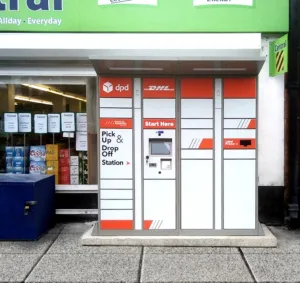By Matt Swinney, Director, B2B Solutions, Sony Digital Imaging Europe
Buying habits have changed for good, and the competitive landscape between traditional retailers and ecommerce is more intense than ever. And while the surges seen during lockdown have levelled out, ecommerce is becoming an increasingly dominant part of the retail industry as technological advancements allow customers to use their personal devices to engage with products on a more intimate level. The move towards digital is only growing as these transformational technologies help define new shopping experiences.
To keep pace with the steep competition presented by bricks and mortar retail, ecommerce businesses need to ensure they are utilising the right tools and technologies to establish their brand and stand out from the crowd. An integral part of this is product photography and the evolution of digital imaging solutions. Integrated digital capabilities are a critical component in the transformation of ecommerce, particularly with the continued growth and innovations witnessed in augmented reality (AR) and AI.
Images invoke an emotional response to draw in target audiences and provoke action. Our brains are optimised to receive visual data, with humans able to process images seen for as little as thirteen milliseconds. People are more likely to retain information when presented with it visually in comparison to text or sound-based data. The same can be applied when it comes to displaying products; customers want true-to-life imagery to give them an accurate example of what they are browsing so that they are better equipped to make the decision of whether or not to purchase the item.
While physical shopping experiences remain prevalent, the online shopping experience is expanding and evolving with the advent of more advanced digital tools and technologies. Even so, imagery in ecommerce is having to parallel the smells, music, lighting, and human interactions utilised by brands in the physical retailer experience. Constructing a positive shopping experience online can be challenging when competing with what people are used to, although, employing digital assets which people can interact with easily and intuitively helps to optimise the online selling environment and increase engagement. If shoppers are presented with an authentic experience where they can try products for themselves or in their own surroundings, the line between physical retail and ecommerce begins to blur.
By implementing 3D ecommerce technology, consumers are offered full 360-degree product images, which enables them to ‘try before they buy’. Incorporating AR features present the capability to create a virtual interactive experience across ecommerce platforms to give consumers a better understanding of the product. This technology has been proven to increase the conversion from browsing to shopping by 200% and establishes higher levels of trust in the brand. 3D imaging takes the guesswork out of visualisation and instils in the consumer more confidence in their purchase. As a direct result of customers having these true-to-life digital demonstrations, product returns have the potential to reduce by up to 40%.
Cameras, lenses, and software are all key elements in capturing crystal-clear images that reflect the needs of a business’ audience. In order to create a virtual platform in which customers can fully immerse themselves, it is essential that companies evaluate the technology available to them and assess which works best for their product. Camera set-ups that offer optimum resolution and capture rates should be combined with the compatible software development kit (SDK) to bring images to life, and when creating 3D product images, the right photogrammetry rig is essential.
Photogrammetry is becoming increasingly important in ecommerce. Shots are taken from various perspectives and stitched together to produce 3D models, or a ‘digital twin,’ of the real-world item. This is an important step in allowing the e-tailer to showcase their products and craft an interactive experience for the consumer. Product images are captured with depth and detail, with reliable geometry, to ensure that the visual is an accurate representation. This type of digital imaging is particularly useful when combined with AR features for try-ons and visualising items in the consumer’s existing space.
Digital imaging simplifies the online shopping experience and tailors it to the individual who can choose how involved they want to become with the level of interactivity it provides. Ecommerce provides a convenient alternative that will only continue to develop as digital world-building technology evolves and visual product showcasing becomes increasingly interactive and engaging.
Ultimately, the impact of digital imaging solutions in the world of ecommerce is monumental. Physical and online shopping experiences are becoming intertwined through digital twins, 3D imagery, and AR. Implementing these technologies brings consumers closer to the product, allowing people to embark on a shopping journey that was once only possible in the physical world, but can now take place from one’s own home.







